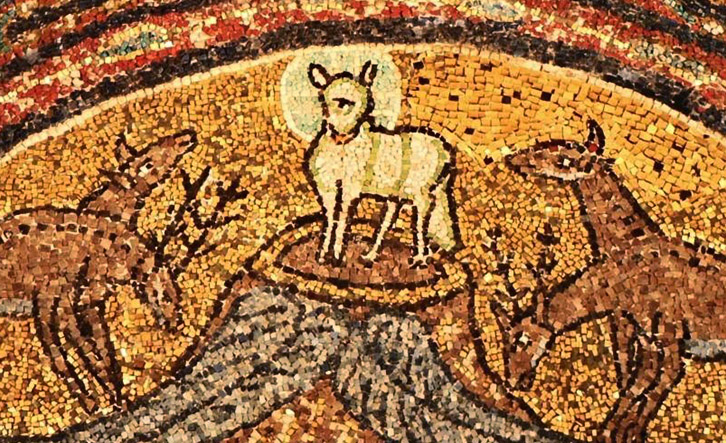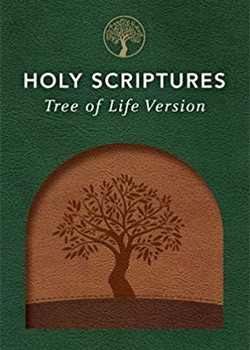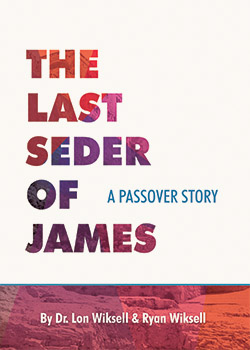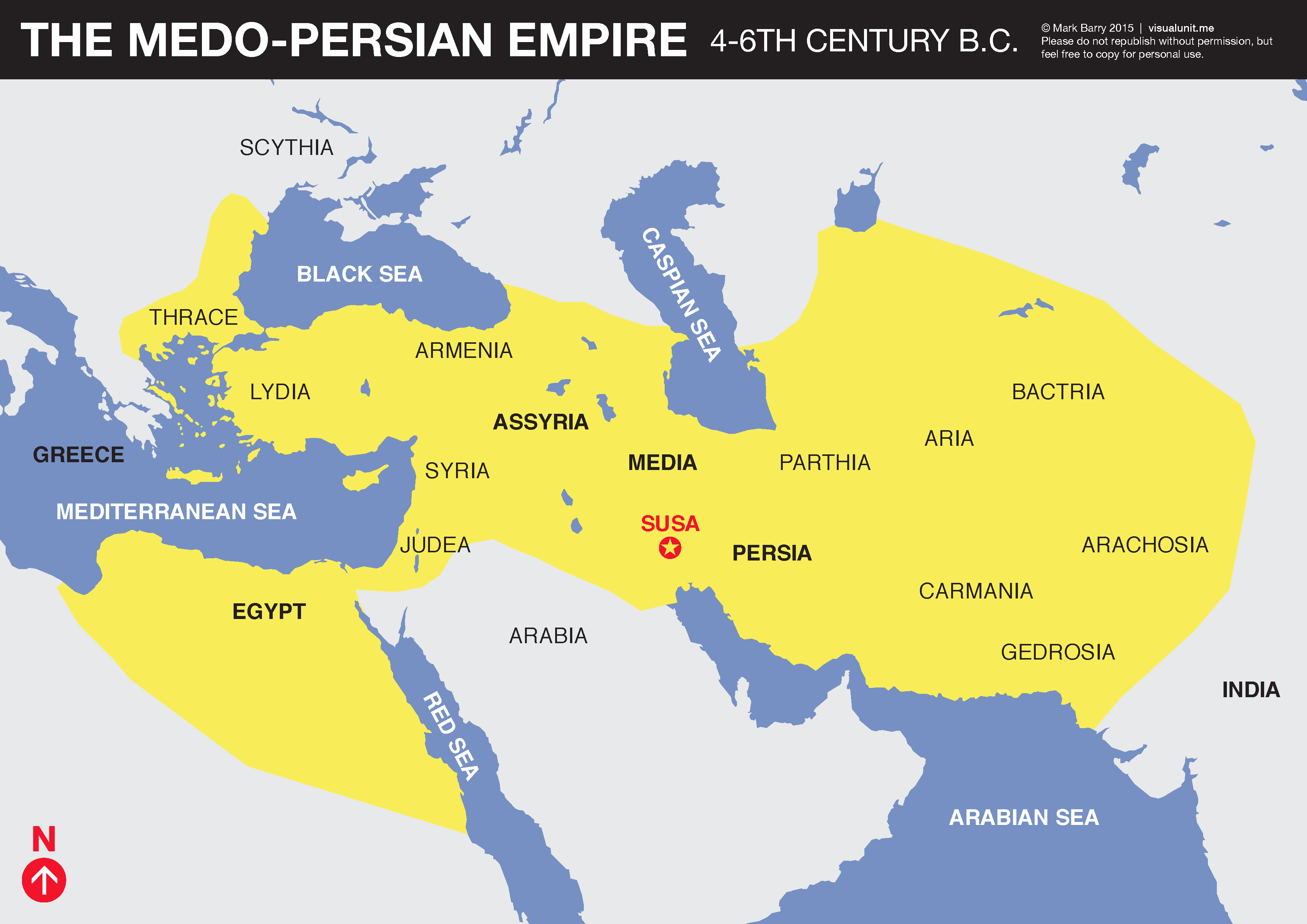The Lamb of God
Passover Lamb Series, Part 2

This is Part 2 of the 3-Part Passover Lamb series. Make sure you’ve read Part 1: The Lamb of Exodus
“Most went to John the Baptizer to repent and be baptized, yes. But many were there just to see what he would do next. Of course the big one was welcoming Yeshua as ‘the Lamb of God who takes away the sin of the world.’ That shocked everyone.”
Yeshua is the Lamb. But he’s also the Shepherd. A church pastor is a shepherd, too. A shepherd who worships a Lamb—a Lamb who’s dead but actually alive. Oh, and he’s also a Lion.
If you’re still reading, you might be demanding an explanation. Or an apology.
Clanging Symbols
Welcome to the gloriously twisty world of biblical symbolism. This is where your Honors English professor would pick up a red pen and write “Mixed metaphors. Correct and re-submit.” Fortunately, the Bible was not a writing project for your Honors English class. When it was written, English didn’t exist yet. Nor did the “either/or” demands we modern westerners place on written communications.
As a result, some people label biblical literature as “primitive”. We, however, see it as ancient wisdom. Or better yet, divine revelation, designed to reveal the heart of God in the context of history. And in this instance, God wants humanity to see Yeshua as a Lamb. Why do you suppose an image like this would be helpful? Let’s find out by turning to the first chapter of John’s gospel.
After, Above & Before

The next day, John [the Baptizer] saw Yeshua coming to him and said, “Behold, the Lamb of God who takes away the sin of the world! This is the One about whom I told you, ‘He who comes after me is above me, because He was before me.’ I didn’t know Him, but I came immersing with water so that He might be revealed to Israel.” (John 1:29-31)
That’s clear enough, right? “He who comes after me is above me because he was before me.” To a western mind, this language is just tumbling further down the wormhole of contradiction. But as I alluded to above, John was not talking to westerners. His listeners’ minds worked differently than ours.
For a prophet to baptize people (directly or indirectly) it required some type of spiritual authority. A son would never baptize his father, nor a student his teacher. So when the Son of God showed up to be baptized by a mere mortal, John found it highly unorthodox. So much so that he tried to get out of it, until Yeshua convinced him to proceed. Upon agreeing, John felt the need to point out the upside-down-ness of the situation he was in. This is where the “after/above/before” business comes from.
But John didn’t stop there. Instead he used the moment at hand to proclaim the entire purpose of his ministry: to pave the way for the Messiah. Whereas John had come to baptize for the repentance of sins, Yeshua was the Lamb of God who had come to take away the sin of the world.
Picture Perfect
Notice that John began his declaration with that declarative word “behold”. He wasn’t speaking privately to Yeshua, or a small group of insiders. He was announcing to everyone present that the Messiah had come. So if that’s the case, why he didn’t just come right out and say it? “Hey Everyone! Here’s the Messiah!” Why all this business about a sheep?”
It sounds dodgy to us, but as far as the Jewish people around him were concerned, John actually did come right out and say it. Because they were all steeped in the imagery of the Passover lamb, whose blood was spilled to exempt them from death. They had celebrated it every year since birth.
The problem is, this lamb of Moses had to be slaughtered again and again, year after year. So of course, anyone called the Lamb of God must be the ultimate fulfillment of this rite. One perfect sacrifice for all time, for all people. What’s more, this one label could be considered Yeshua’s definitive title in his role on earth. All that he was and all that he came to do were summed up in his sacrificial death as the Lamb of God.
But Yeshua didn’t claim this picture for himself. At least not right away. After his baptism, he proceeded to minister for three years, referring to himself as the Bread, the Vine, the Door, and of course, the Good Shepherd. But never the Lamb, until…
The Last Supper
As we noted, the Lamb imagery wasn’t lost on John’s audience, and it wasn’t lost on Yeshua either. His family, like all others, traveled to Jerusalem every year to observe Passover. (Luke 2:41-42) So by adulthood Yeshua would have been very familiar with Jerusalem, the Temple and the festival proceedings.
The journey from Nazareth itself would be a formative experience for any young boy; walking a hundred miles or so with relatives, friends and neighbors. Imagine the exhilaration of seeing the gleaming walls of Jerusalem come into view after a week on the road. Imagine the crowds from all over the world mingling together to remember and celebrate their freedom from bondage, and their birth as a nation.
Imagine watching the Temple priests perform their duties with flair and pomp. To hear the choirs sing the Songs of Ascent and blow the shofars. At the center of all this activity would be the effort to find the perfect lamb, then taking it to the Temple to be sacrificed, and finally sharing in the Passover meal.
It’s one thing to imagine Yeshua as a boy or young man participating passively in the festivities. It’s another thing altogether to picture him fully grown, selecting the perfect lamb himself for the sacrifice. He may have done this as early as age sixteen, when it’s supposed that his father Joseph died. At age thirty-two, he would have been performing this role for half his life, but then, when he was thirty-three, all of sudden things were different.
The Scandalous Freckle
“At the height of our debate Yeshua came in, carrying the lamb he had just selected from the marketplace, and had taken to the Temple to be sacrificed. He had spent hours selecting it, just like you say his father used to do, but this one had a freckle on its ear. We all saw it. We had the money, why didn’t he choose a perfect one? But things were about to get much stranger than that.”
This scene from Our Father Abraham’s forthcoming book supposes that Yeshua took a different approach to Passover in his thirty-third year. As we know, he was prepared to go to the Cross the very next day, to become the slaughtered Lamb for all of humankind, receiving the punishment for our sin and banishing the Angel of Death once and for all. The millions of perfect lambs which had been sacrificed over the years since the Exodus were now officially obsolete.
Nevertheless, Yeshua and his disciples still needed a lamb. They needed it to serve its symbolic role in the Passover Seder, and they also needed an entree for dinner. But it no longer needed to be perfect. The perfect and ultimate sacrifice had already arrived.
This reality was not a secret, to be uncovered by future generations. Yeshua made it painfully obvious to his own disciples right there at the Seder. The Passover wine that had always symbolized the blood of the slaughtered lamb was now to represent his own blood shed at Golgotha. And the yeast-less bread would now be broken to remind them of his sinless body, wrecked on the Cross. (And yet, like the lamb, no bones would be broken.)
The Point is in the Pointing
Passover may be the preeminent ritual of the Covenant of Moses, but it is far from the only one. Six other festivals, and countless symbols are prescribed in the Torah which bring depth and color and life to the promises of God, and his desired response for humanity.
There’s just one problem: they’re all meaningless. In and of themselves, that is, they count for nothing. It’s only because they point forward to Jesus that they have power. Faith in these symbols, for Old Testament believers, was “credited to them as righteousness” because they believed every symbol pointed ahead to the Coming One.
Today, you and I can look back at the Messiah that Noah, Abraham and Moses could only look forward to. It’s quite a competitive advantage. But we can still relate to their situation, because faith is now required from us to believe that this Messiah will come again.
In Part 3: The Lamb of Revelation, we’ll explore the symbology of that ultimate arrival of Yeshua, “looking as though he were slain.” Our hope is in one thing: that, although our Rescuer arrives on the scene as a defeated Lamb, he comes to rule the world as an invincible Lion.
TOPICS: God, Lamb, Passover, Passover Lamb Series, Yeshua


